Mastering Astrology House Systems: A Comprehensive Guide
What is Astrological Grammar?
Astrology is a language, and just like any language it has its own structural elements that are essential for communication. For example, in English, we can break down our sentences into nouns, adjectives, verbs and adverbs that play different roles and work together in particular ways.
These categories of words have a lot in common with the key elements of chart reading in astrology: planets, signs, aspects and houses. When astrologers read charts, they are analyzing how these elements work together in the same way that you might analyze the grammatical structure of a work of literature.
By understanding these basic elements and how they work together, you can begin learning the language of astrology!
The Cornerstones of Chart Interpretation
Verbs & Aspects
Aspects are planetary relationships. As the planets move around the sky at their own pace, they come into different relationships with each other across the Zodiac wheel. Astrologers look at these aspects in the past (reading a birth chart), in the present (looking at current transits) or in the future (calculating future transits to make predictions).
In the language of astrology, aspects are the verbs. They refer to interactions between planets who are in motion, and these aspects do different things depending on the type of relationship being formed and the planets involved.
Adverbs, Adjectives & Signs
The Zodiac sign that a planet is placed in will determine how that planet’s energy is expressed. Similarly, adverbs and adjectives in grammar serve to modify and add more detail to verbs and nouns.
For example, you can say you ran yesterday, but whether you ran vigorously or silently makes a HUGE difference. The planet Mars likes to move, but when placed in Aries it will move very differently than when placed in Cancer.
Nouns & Planets
Regardless of what is being done or how it is being done, someone or something has to do it. That’s where nouns come into play.
The name of a planet itself is a noun. You could say Jupiter (planet) in Libra (sign) sextiled (aspect) Saturn OR Jupiter (noun) kindly (adverb) helped (verb) Saturn. That’s one of many possible translations of the same sentence from the language of astrology into English!
To go even deeper, let’s think about what kinds of nouns Jupiter or Saturn might be. The energy of Jupiter is illuminating, expansive, and enthusiastic. If it were a person, it might be a teacher! Saturn, on the other hand, is disciplined, slow-paced and materially oriented. Saturn was also the name of the Roman god of agriculture, so it might make sense to call Saturn a farmer!
Now the sentence reads: The teacher kindly helped the farmer. To know exactly what the teacher helped the farmer with, we’d need to look at some other factors in the chart, including the Houses where these planets are located.
The Houses
Planets not only interact with the signs and with each other but also with houses. Planets and houses are both nouns, but they have different roles and nuances.
In most cases, planets represent nouns that can carry out actions, like a person or animal. Meanwhile, houses tend to represent the areas of life that are impacted by the actions of those planets. When interpreting a chart, astrologers will usually look to the house to understand what concrete part of the person’s life the energy of the planets will impact most directly.
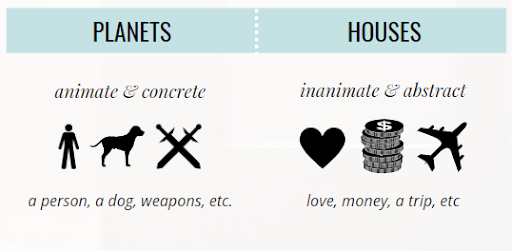
Translating Chart Elements
Each planet, house, sign, and aspect in astrology has its own set of natural meanings that astrologers use to “translate” them. It's important to note that each of these factors has multiple meanings that will apply differently in different situations. This is why we said above that the example about Jupiter helping Saturn is just one of many possible translations of that aspect.
The astrologer’s task is to determine what is the right way to translate each planetary sentence based on the context and situation. For example, interpreting a birth chart for a person is very different than interpreting a chart for a business. Even within a particular chart, the energy of each planetary relationship will be impacted by many, many different factors within the chart that an astrologer has to consider in order to come up with the most accurate (and helpful!) translation.
How to find the Houses
There are a few different ways to locate the houses in a chart. We suggest you pick one to work with as you get familiar, and then experiment to determine what method works best for you.
You may find that multiple house systems are valuable and feel “right” in different ways – that’s pretty common! Each of these methods offers a unique perspective, and all of them can provide valuable insights. So, feel free to explore and choose the approach that resonates with you the most.
Although there are dozens of house systems in astrology, they tend to fall into three main categories: Whole Sign, Equal Sign, and Quadrant Houses.
- Whole Sign Houses are the easiest to identify as they start and end at the first and last degrees of a sign, and are all of equal size. In this system, one house = one sign, and the cusps (or starting points) of the signs and houses will line up perfectly. The First House will always be the ascendant or rising sign, and the rest of the houses will follow in order.
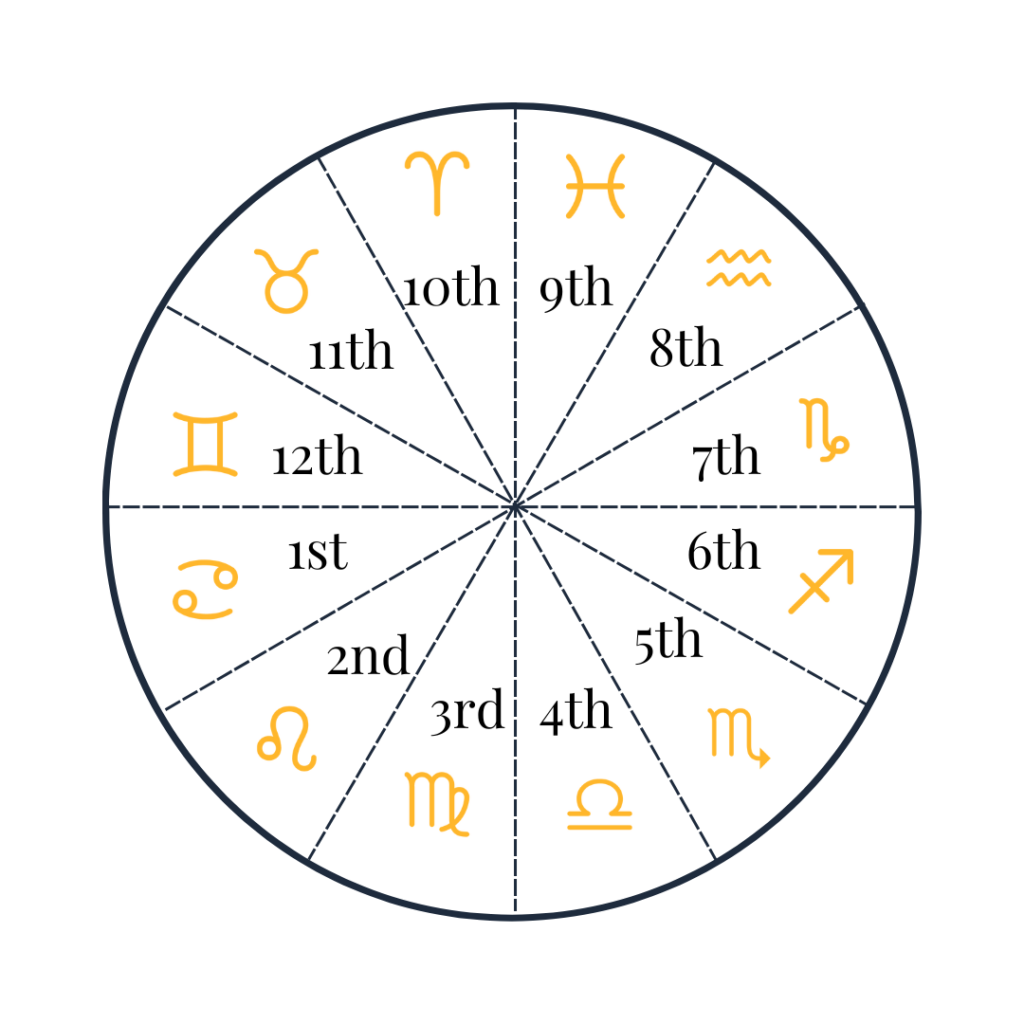
2. Equal Sign Houses are similar to Whole Sign in that each house is the same size (30° of the 360° Zodiac wheel), but rather than beginning at the cusp of each sign, the First House in this system will begin at the degree of the ascendant.
This means that each house cusp will fall at the same degree, one sign apart. For example, if the Ascendant in this chart is at 12° Leo, then that will be the cusp of the 1st House. The 2nd House will begin at 12° Virgo, the 3rd at 12° Libra, and so on.
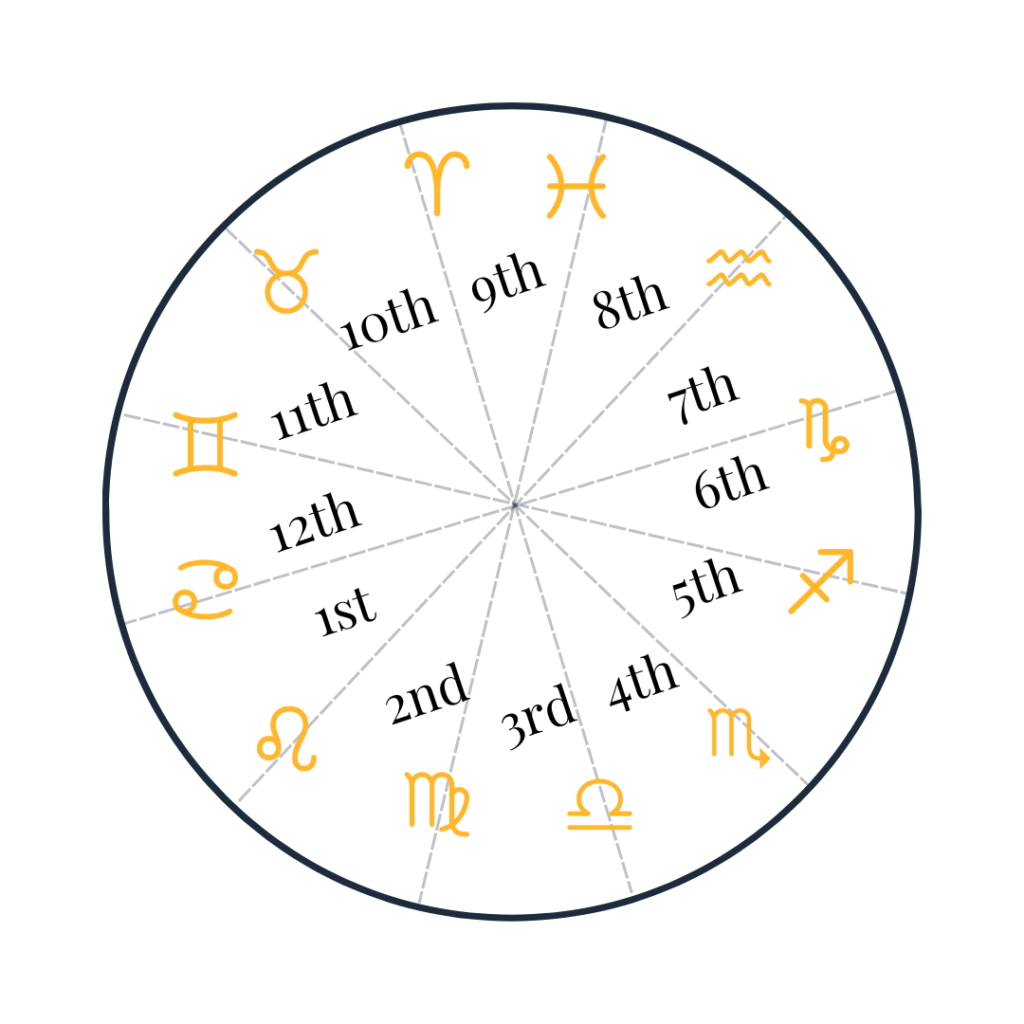
3. Quadrant Houses are the most complex and nuanced method of house division, with various systems such as Placidus, Koch, Porphyry, and Alcabitius, each slightly shifting where a house starts and ends. These houses are not of equal size and some signs may not have house cusps of their own. The 5-degree rule is often used in Quadrant Houses to determine which house a planet is in when it is close to the house cusp.
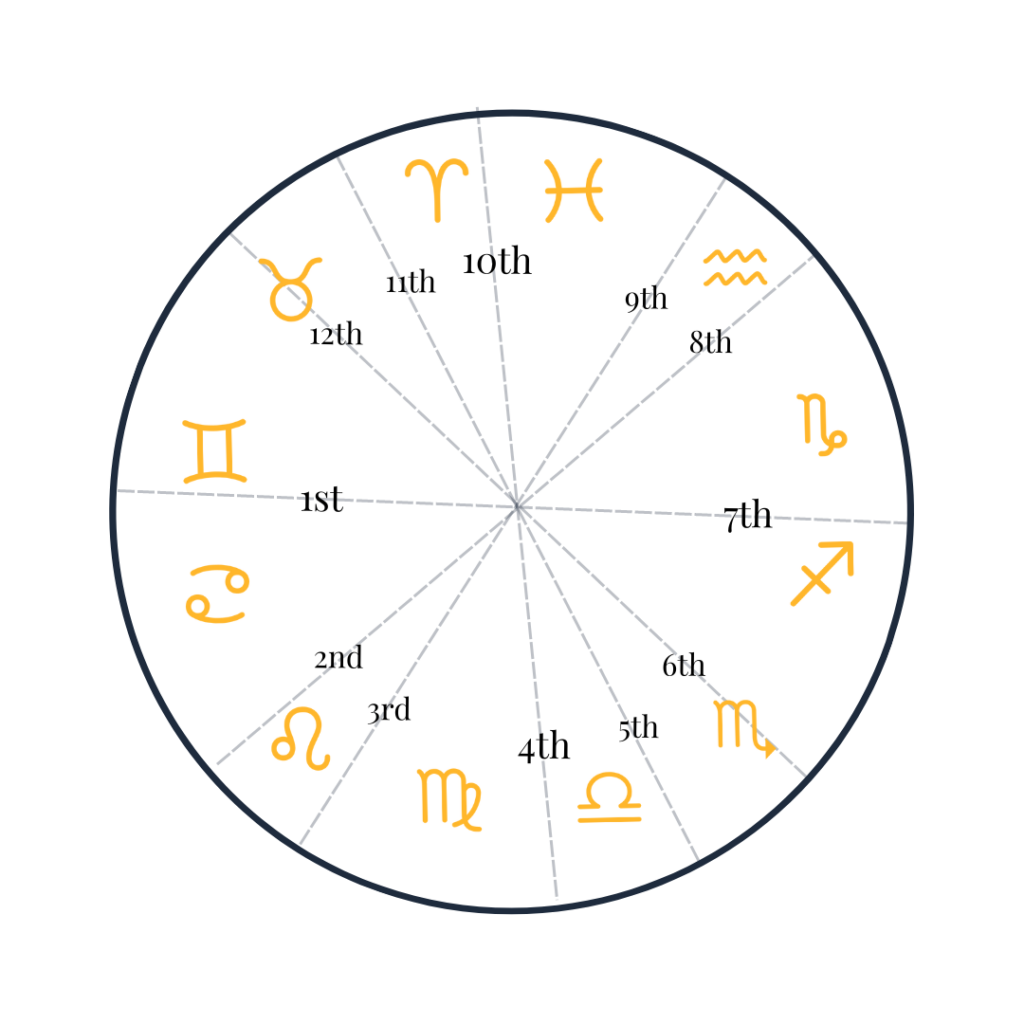
The 5 Degree Rule
When interpreting astrological charts using Quadrant Houses, it's not always clear what house a planet falls into, especially as they approach the cusps between houses. If a planet is within 5 degrees after a house cusp, it’s often considered to be in the preceding house. For example, if Venus is at 15 degrees Aries and the 9th house cusp is at 12 Aries, then the 5-degree rule would indicate that Venus is actually in the 8th house, despite being in Aries.
If that sounds confusing – you’re not alone! Quadrant Houses are complex, and many beginners find it helpful to start with Whole Sign or Equal Houses before exploring the Quadrant format. Experimenting with different methods can help you find the one that works best for you.
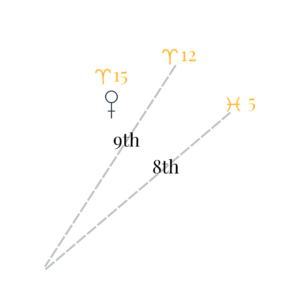
What is a Planetary Ruler?
In astrology, each planet is said to rule over specific zodiac signs. This means that that planet is at home in that sign(s) and “hosting” whatever planets happen to be located there. This is true no matter where in the chart the planetary ruler is located. Here's a list of the traditional rulerships:
- Saturn: Capricorn / Aquarius
- Jupiter: Pisces / Sagittarius
- Mars: Scorpio / Aries
- Sun: Leo
- Moon: Cancer
- Venus: Taurus / Libra
- Mercury: Gemini / Virgo
You might’ve noticed that Uranus, Neptune, and Pluto are not on the list above. That’s because they were discovered relatively recently in the history of astrology. Not all astrologers use these “modern” planets as rulers, but those who do generally assign them like this:
- Uranus: Aquarius
- Neptune: Pisces
- Pluto: Scorpio
The Significance of House Rulers
Houses have rulers too, and house rulers play a significant role in chart interpretation. To find the ruler of a certain house, look for the sign that is on that house cusp. The ruler of that sign is the ruler of the house, and will tell you a lot about how that house functions in the chart.
There are two common approaches to working with house rulers.
- Look at the position of the ruling planet to see whether it aspects the cusp of the house it rules. Remember: an aspect is like a verb, and if the ruling planet aspects the house, it means that planet is directly interacting with the topics related to that house.
- Consider the energy of the house ruled by the planet combined with the house in which the planet is located. If the ruling planet also aspects this house, these topics are combined and acted upon.
Examples
Scenario #1 – Aspect vs No Aspect
 As you learned above, Mars rules both Aries and Scorpio. In this chart, those signs are in the 10th and 5th houses, respectively, and Mars is positioned in Virgo. You can see that Mars is not aspecting Aries, only Scorpio (by a sextile). Here are some possible “translations” of this “sentence.” Remember that an astrologer will be considering many more chart factors to determine is the proper translation:
As you learned above, Mars rules both Aries and Scorpio. In this chart, those signs are in the 10th and 5th houses, respectively, and Mars is positioned in Virgo. You can see that Mars is not aspecting Aries, only Scorpio (by a sextile). Here are some possible “translations” of this “sentence.” Remember that an astrologer will be considering many more chart factors to determine is the proper translation:
EX1: A precise (Virgo) ironsmith (Mars) creates (Sextile) a profound (Scorpio) sculpture (5th House).
EX2: A carpenter (Mars) quickly (Aries) forgets (No Aspect) his shift at work (10th House).
Scenario #2 – Combining the Houses
Looking at the same chart, you see that Mars is in the 3rd house. To get a more detailed interpretation, you can combine the meaning of the house and the planet.
In the previous example, Mars represented a carpenter, so to add more detail, you can ask yourself, who else might that carpenter be based on the house that Mars is in?
One signification of the 3rd house is that of siblings or friends. So, in this case, the following interpretation is possible:
EX1: My brother (3rd House) the carpenter (Mars) quickly (Aries) forgot (No Aspect) his shifts at work (10th House).
Conclusion
Working with the rulers of houses is a key technique for interpreting astrological charts. By understanding the significance of each planet, as well as its influence on the houses it rules and aspects, astrologers can delve into the nuances of a person's life and personality.
There are many different ways to approach this subject. You can use house rulers to describe how the planets act upon each other in the chart, or to delve into the interplay of house topics and planetary energies. While you’re learning, play around with different methods and choose the one that works best for you. Eventually you’ll learn to tailor your approach to the particular chart you’re working with.
Remember, astrology is a craft that is both ancient and ever-evolving. As you study and practice, you’ll gain a deeper understanding of the ways in which the planets, houses, and aspects combine to create a unique picture of an individual's life.
Take your astrological knowledge to the next level and immerse yourself in a world of FREE astrological content over at the Astrology Hub Podcast!
And if you’re craving an even deeper level of support and guidance, check out our Inner Circle. This community of like-minded astrology lovers works with some of the most celebrated astrologers in the field, receiving in-depth teachings that attune to each month’s lunar cycle. Visit ASTROLOGYHUB.com/InnerCircle for more information.
For more on the houses, be sure to check out our House Series on YouTube! In this series of conversations, you’ll learn about the meaning behind each house and the role they each play in your unique birth chart. Click here to start watching now!
Sources
- The Anthology – Vettius Valens
- The Book of Instruction in the Elements of the Art of Astrology – Al Biruni
- Christian Astrology – William Lily
- The Houses: Temples of the Sky – Deborah Houlding
- Grammar – Rachel Holley
- The Fourty Chapters – Al Kindi


